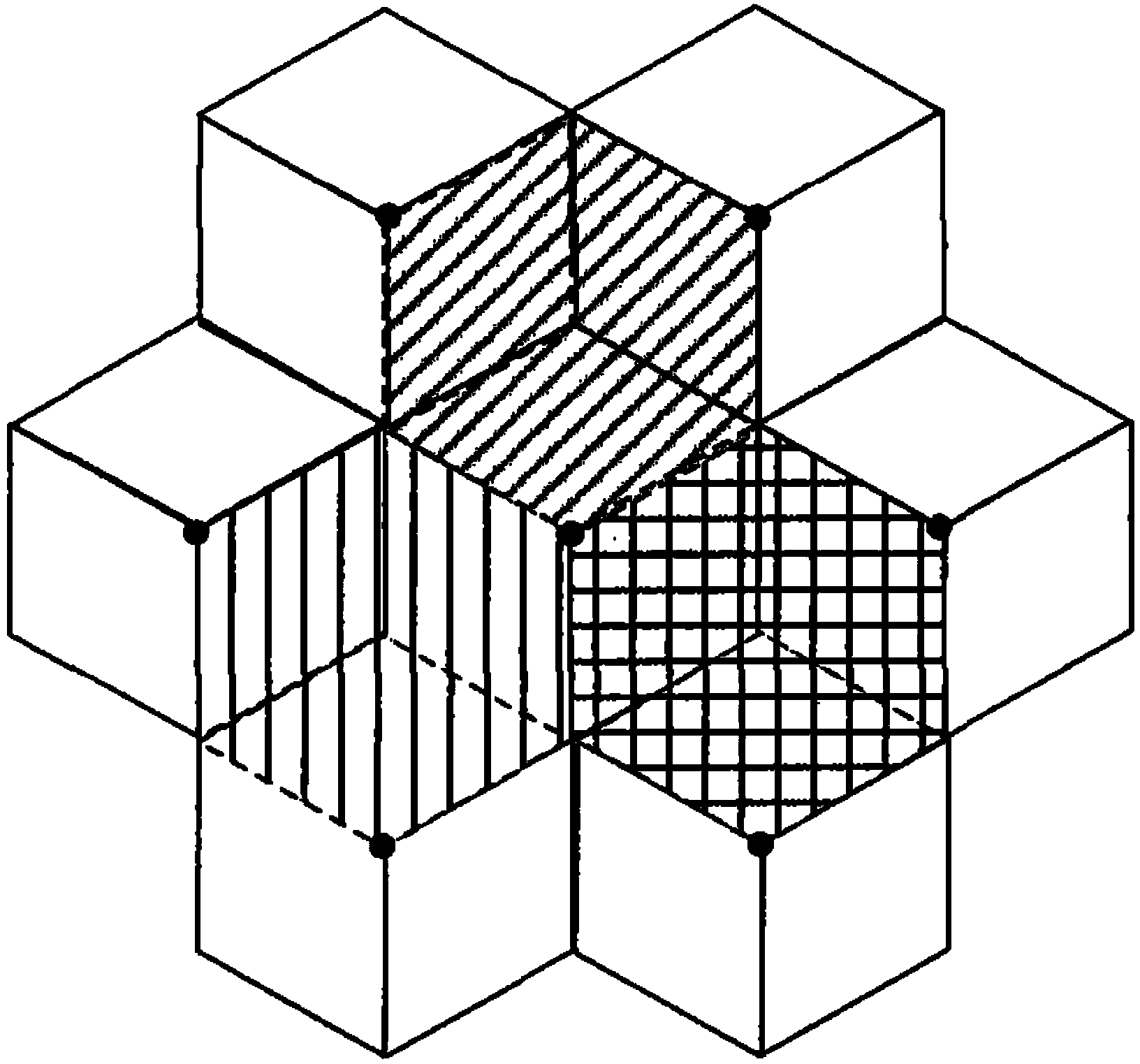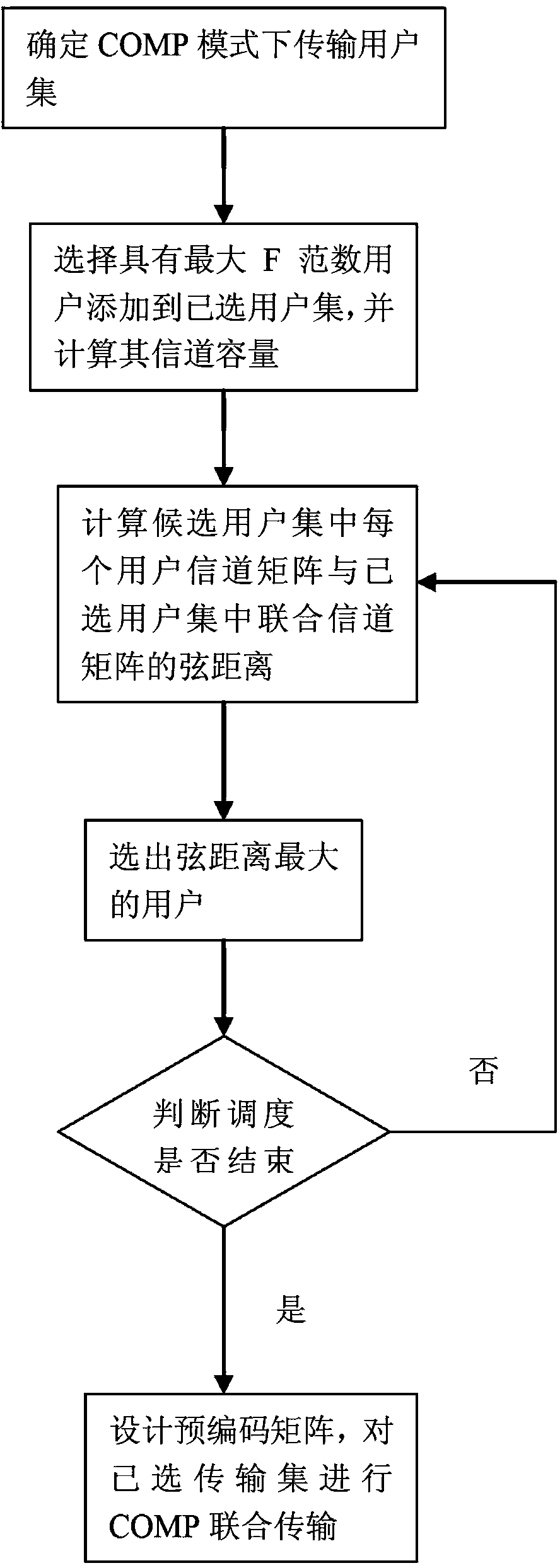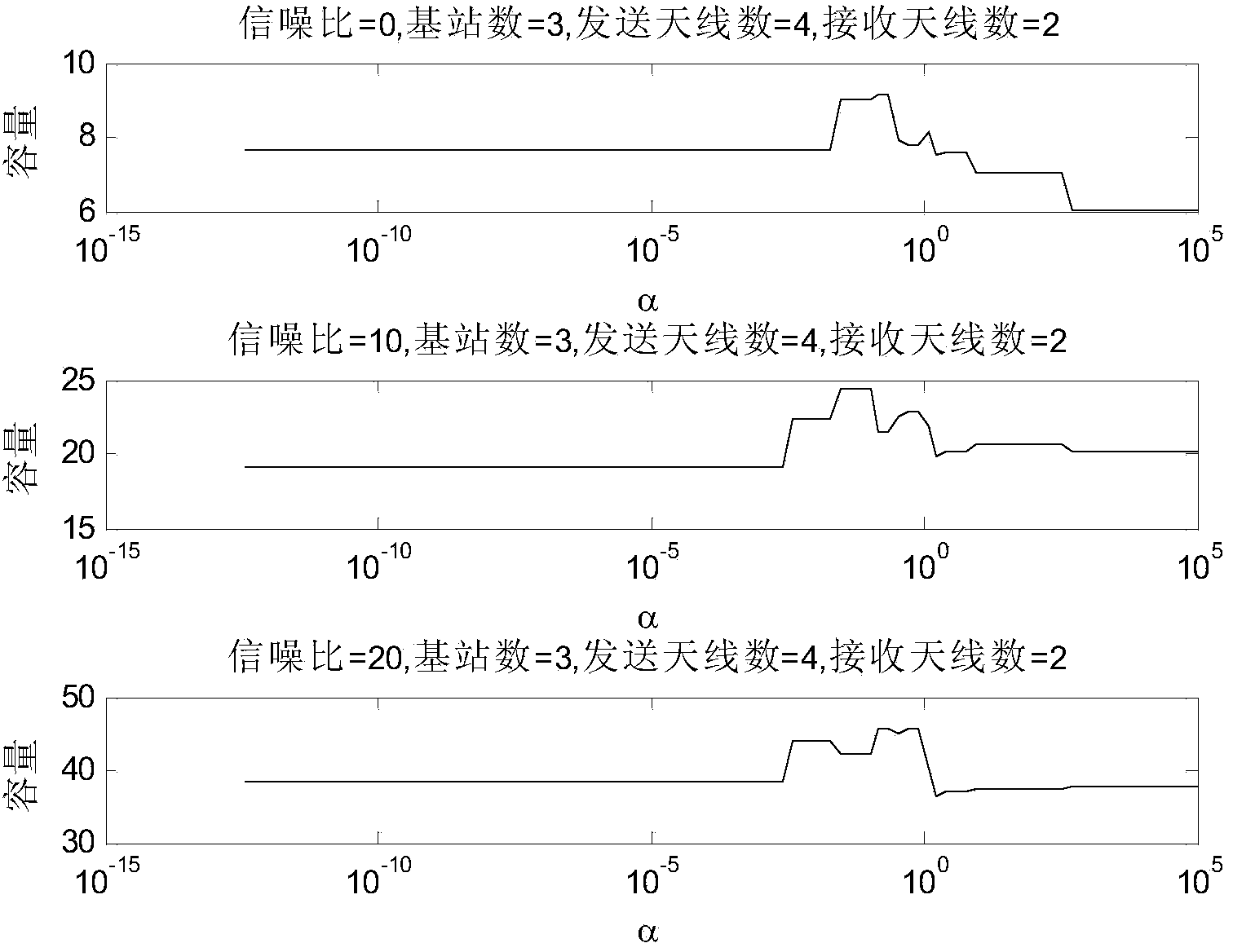Downlink MU_COMP scheduling algorithm based on improved chordal distance
A scheduling algorithm and chord distance technology, applied in electrical components, wireless communication, etc., can solve problems such as high complexity, limiting edge user service quality and throughput, etc.
- Summary
- Abstract
- Description
- Claims
- Application Information
AI Technical Summary
Problems solved by technology
Method used
Image
Examples
Embodiment Construction
[0025] The invention will be further described below in conjunction with the accompanying drawings.
[0026] Such as figure 1 The cell structure in the present invention adopts a regular hexagon, and there are three sectors in each cell, and the adjacent sectors of every three adjacent cells form a cluster, and the algorithm proposed by the present invention is applied in this cluster.
[0027] Consider a multi-cell multi-user downlink MIMO link consisting of Nu edge cell users, the number of receiving antennas of user UE is Nr, the number of base stations for cooperative transmission is Nb, the number of transmitting antennas of each base station is Nt, and the transmission power is limited to P, the channel from the base station to the user is a Rayleigh flat fading channel, and the number of cooperative users allowed to be accommodated by the cooperative base station in any time slot is
[0028] The specific steps of the downlink MU_COMP scheduling algorithm based on the...
PUM
 Login to View More
Login to View More Abstract
Description
Claims
Application Information
 Login to View More
Login to View More - R&D
- Intellectual Property
- Life Sciences
- Materials
- Tech Scout
- Unparalleled Data Quality
- Higher Quality Content
- 60% Fewer Hallucinations
Browse by: Latest US Patents, China's latest patents, Technical Efficacy Thesaurus, Application Domain, Technology Topic, Popular Technical Reports.
© 2025 PatSnap. All rights reserved.Legal|Privacy policy|Modern Slavery Act Transparency Statement|Sitemap|About US| Contact US: help@patsnap.com



